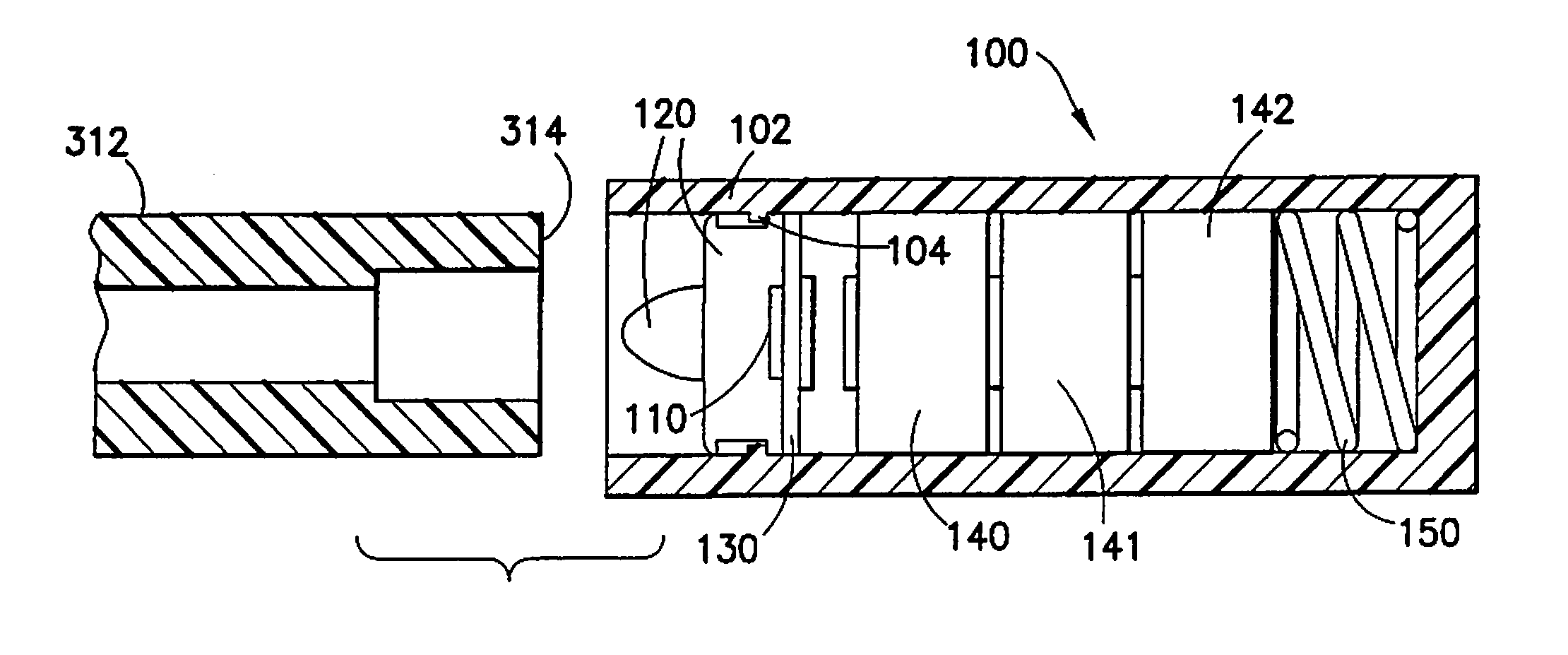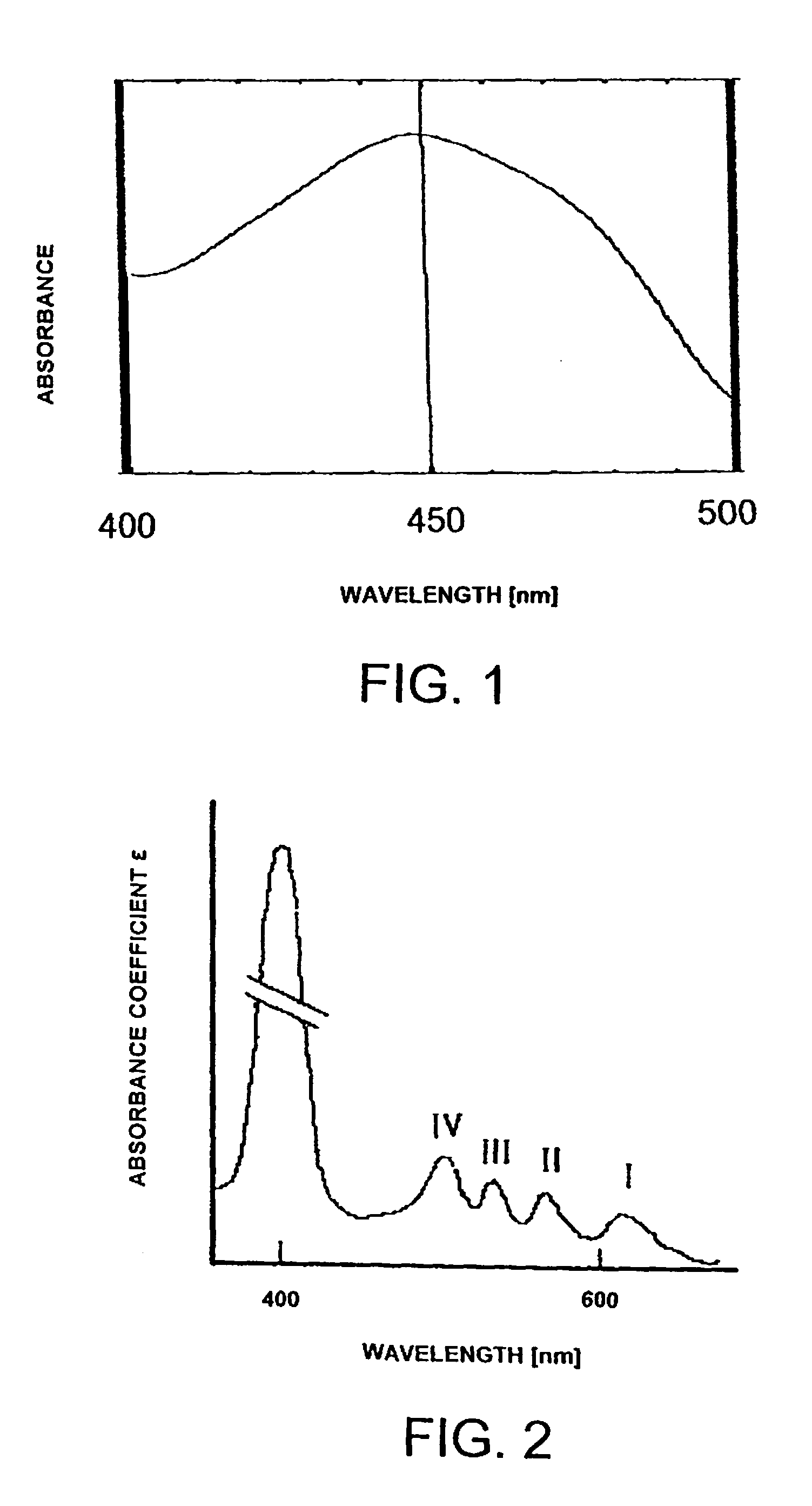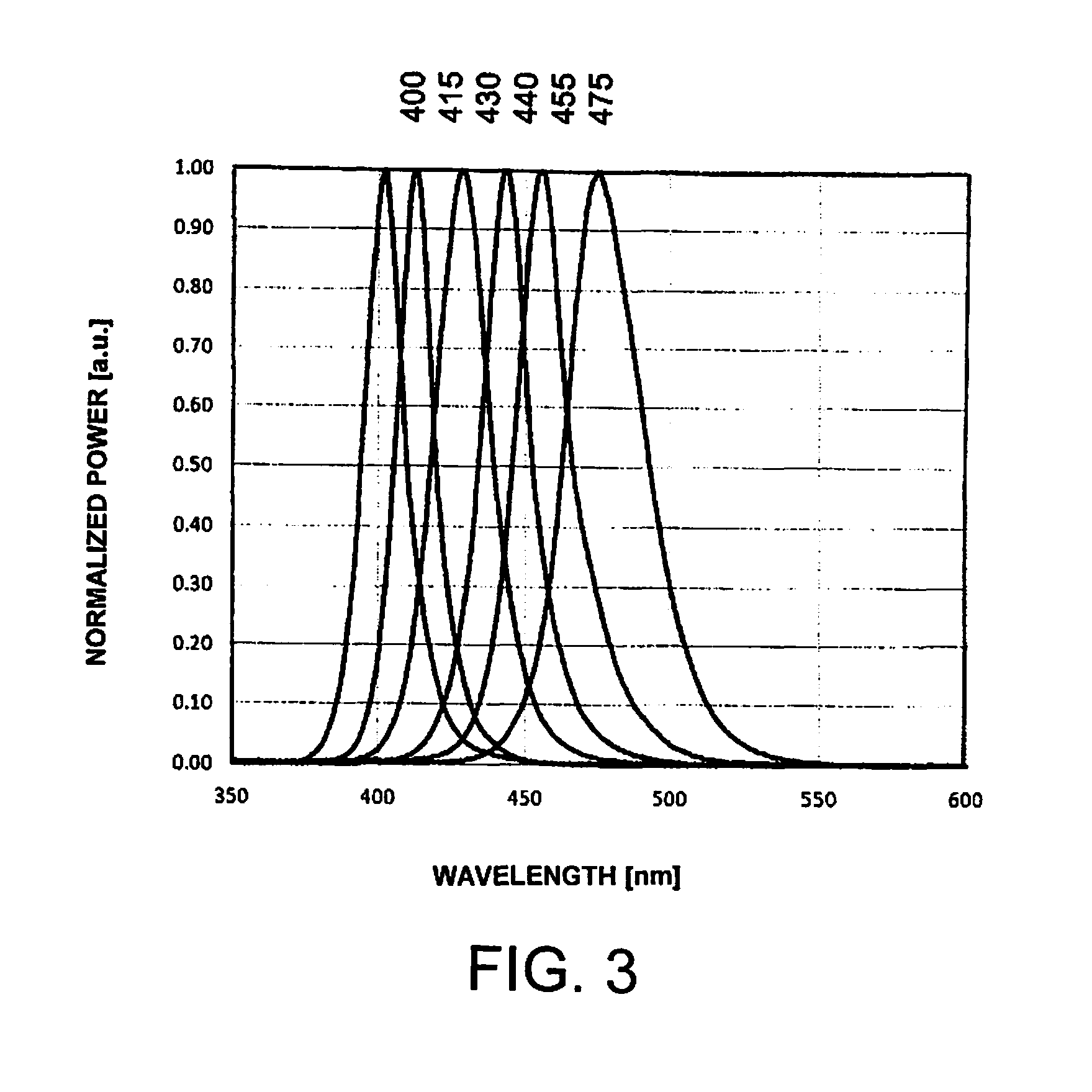Methods and apparatus for reducing count of infectious agents in intravenous access systems
a technology of intravenous access and infectious agents, which is applied in the direction of catheters, radiation therapy, injection needles, etc., can solve the problems of low efficacy of methods of cleaning and disinfecting indwelling catheters and associated tubes, inability to prevent direct bloodstream contamination, and difficult to remove infectious agents, so as to reduce the contamination of iv lines, prevent patient bloodstream infection, and reduce the count of infectious agents
- Summary
- Abstract
- Description
- Claims
- Application Information
AI Technical Summary
Benefits of technology
Problems solved by technology
Method used
Image
Examples
first embodiment
[0056]According to the invention, a first LED or laser diode 501 (depicted by solid lines in FIG. 4) is embedded or installed in the manifold flange 405. Diode 501 is oriented so that it emits violet and / or blue light over an area that includes the stopcock valve 415 and the portion of the manifold tubing below stopcock 415. The stopcock assembly 400 may comprise one or more slots for LED or laser diode integration. For example, the diode 501 can be inserted in a recess formed in the manifold flange 405. The diode 501 requires an electrical power supply (not shown in FIG. 4). Optionally, the diode 501 may be powered by batteries. Other schemes for providing electrical power to the diode 501 will be described below with reference to FIGS. 7-14.
[0057]The LED or laser diode device 501 is shown in more detail in FIG. 5. The LED or laser diode device 501 may be similar in design to the standard SMD LED or laser diode devices. An LED or laser diode chip 505 is embedded in a plastic housin...
second embodiment
[0060]FIG. 7 shows a stopcock valve assembly in accordance with a In addition to a diode 501, the assembly comprises an electrical power connector 804 embedded or installed in or attached to the plastic manifold flange 405 of the stopcock valve assembly. The snapped-in-place LED or laser diode device 501 is electrically connected through a pair of electrically conductive contacts (i.e., contacts 520, 521 seen in FIG. 5) to a pair of conducting wires 801, 802, which in turn electrically connect the diode 501 to the electrical power connector 804. The conducting wires 801, 802 are also either embedded or installed in or attached to the manifold flange 405. The electrical power connector 804 comprises a pair of terminals which fit inside a socket (not shown in FIG. 7) that is electrically connected to an electrical power supply (not shown).
[0061]FIG. 8 shows an intravenous therapy setup that incorporates a stopcock valve assembly in accordance with the second embodiment. The setup com...
third embodiment
[0063]In accordance with the invention, the LED or laser diode power supply system may be accomplished by utilizing a fiber optic power delivery system, which will now be described with reference to FIGS. 12-14. FIG. 12 shows a manifold flange 405 of a stopcock valve assembly of the type previously described, with an electronic power system 806 and a photovoltaic cell 808 embedded or installed in or attached to the flange. The photovoltaic cell 808 receives light energy from a light source (not shown in FIG. 12) via an optical fiber 820 and an optical connector 810 which couples the output of the optical fiber 820 to an input of the photovoltaic cell 808. The terminal portion of the optical fiber 820 and the optical connector 810 are either embedded or installed in or attached to the manifold flange 405. The photovoltaic cell 808 converts the received light energy into electrical energy. The generated electric current flows from the photovoltaic cell 808 to the electronic power syst...
PUM
| Property | Measurement | Unit |
|---|---|---|
| wavelengths | aaaaa | aaaaa |
| wavelengths | aaaaa | aaaaa |
| wavelengths | aaaaa | aaaaa |
Abstract
Description
Claims
Application Information
 Login to View More
Login to View More - R&D
- Intellectual Property
- Life Sciences
- Materials
- Tech Scout
- Unparalleled Data Quality
- Higher Quality Content
- 60% Fewer Hallucinations
Browse by: Latest US Patents, China's latest patents, Technical Efficacy Thesaurus, Application Domain, Technology Topic, Popular Technical Reports.
© 2025 PatSnap. All rights reserved.Legal|Privacy policy|Modern Slavery Act Transparency Statement|Sitemap|About US| Contact US: help@patsnap.com



